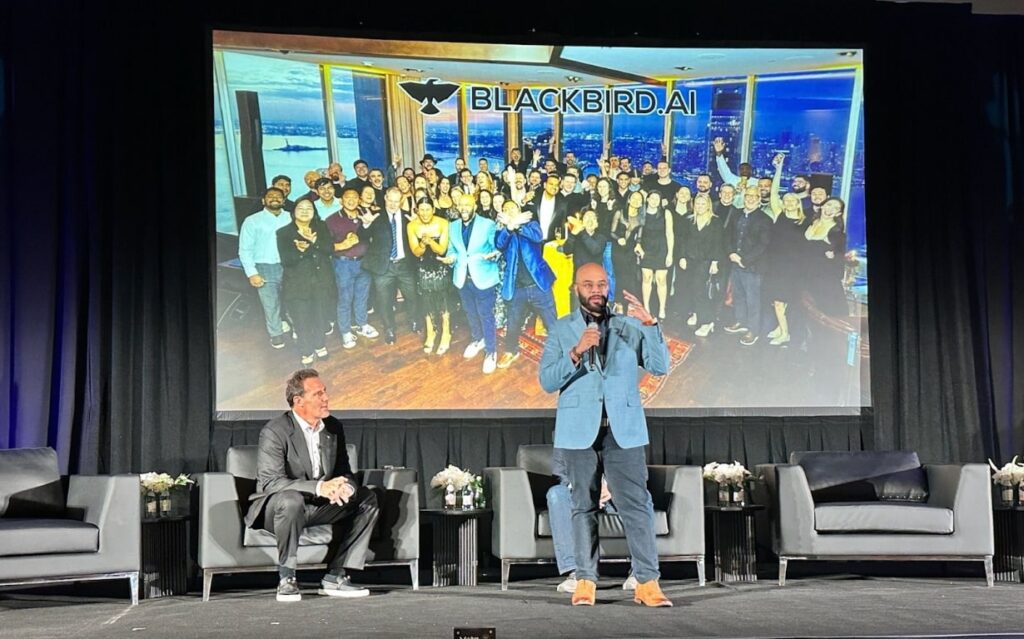Zero Trust: When Your Most Vulnerable Endpoint Is the Mind
As sophisticated actors weaponize narratives and deepfakes, cybersecurity must evolve beyond protecting systems to safeguarding perception itself: The next breach will target your narrative and your network

Blackbird.AI
Zero Trust was built around one powerful idea: never trust, always verify.
It transformed how we think about identity, access, and risk—especially in a world where every device, user, and application could be compromised. But in 2025, human perception is a far more vulnerable surface under siege.
Zero Trust can’t stop at code. It must extend to cognition because today’s exploits target your brand and narrative and your software.
We now live in an era where deepfakes, botnets, and coordinated narrative attack campaigns attack the very lens through which we see reality. If you’re a CISO or threat intelligence lead, it’s time to acknowledge that human perception is now your most critical endpoint.
LEARN: What Is Narrative Intelligence?
A New Class of Exploit: Narrative Attacks
Think of a typical zero-day exploit—undisclosed, rapidly deployed, devastating. Now imagine one that doesn’t breach your firewall but hijacks public perception about your company.
In January 2021, retail investment platforms like Robinhood restricted trading on GameStop stock during the now-infamous “meme stock” frenzy. What followed was a cascade of coordinated narratives claiming market manipulation, with over 2,000 social accounts generating more than 137,000 engagements in a single wave. The “Hold the Line” narrative contained high abnormal activity levels, indicating a likely coordinated effort to propagate the tagline across platforms. Blackbird’s analysis identified abnormal bot activity, coordinated amplification, and artificially accelerated narrative velocity, all hallmarks of a sophisticated narrative attack that ultimately caused billions in market losses.
This is the anatomy of a narrative attack.
At Blackbird.AI, we’ve tracked this evolution for years. The reality: narrative attacks aren’t just digital manipulations, they’re precision exploits of trust targeting institutions, sectors, and entire economies. Like a sophisticated phishing email, they’re designed to bypass the human filter by appearing legitimate.
Trust is the Payload. Perception is the Perimeter.
In cybersecurity, we’ve spent decades hardening perimeters and endpoints. But what happens when perception itself becomes the perimeter?
Today, threat actors fuse social engineering with synthetic media to bypass even the most robust defenses. We’ve witnessed:
- Deepfake voice calls tricking executives into wiring millions
- Coordinated botnets manipulating investor sentiment with false reports
- AI-generated personas build fake credibility to sway public narratives
A recent incident saw a forged voice call from a “CEO” direct a bank manager to transfer $35 million for a fake acquisition. It worked because humans are wired to trust voices, faces, and authority.
This is where the cyber stack ends and the cognitive stack begins.
Human Cognition Needs a Zero Trust Model
Just like devices, no narrative should be trusted by default.
We need a model where information is continuously validated, the origin is authenticated, and sentiment anomalies are detected in real-time. We also need a framework where human decision-making is protected by verification layers, especially when manipulated beliefs can lead to catastrophic outcomes.
This isn’t hypothetical. In 2023, Blackbird’s Narrative Intelligence Platform detected a coordinated narrative attack campaign targeting Silicon Valley Bank. As negative narratives about the bank’s liquidity spread across social media, our platform detected anomalous spikes in bot activity and coordinated amplification of “bank run” messaging. Within hours, these narratives triggered actual customer withdrawals, ultimately accelerating the bank’s collapse and triggering contagion effects across the financial sector. Our system flagged it within hours—before it entered mainstream news. The threat wasn’t technical; it was reputational, emotional, and economic. But the risk was very real.
Without perception-level visibility, the organization would have been blindsided.
The Financial Sector: High Trust, High Target
Narrative attacks are especially potent in finance.
Markets move on sentiment. A hashtag can be hijacked and synthetically amplified, escalating from online protest to physical attacks on locations and executives, real-life boycotts, and customer withdrawals based on bank-run rumors. Death threats against CEOs and executives follow. Narrative attacks can even convert allies into adversaries by manipulating trusted channels. In one documented case, a coordinated group seeded false information about executive misconduct at a publicly traded company, which was then amplified via sock puppet accounts and bots. The manufactured crisis triggered algorithmic trading responses, allowing short sellers to profit while creating reputational damage long after the debunked falsehoods. Algorithms respond to narrative velocity, and opportunistic attackers know this.
One of our customers faced this scenario, and we guided them on when and how to respond.
We’ve seen “short and distort” campaigns, in which anonymous accounts publish fake reports, short the stock, and amplify panic through sock puppets and social bots. Some are profit-driven, and others are nation-state actors destabilizing Western financial systems.
Whatever the motive, the playbook remains the same: exploit the perception endpoint before security teams recognize the threat, maximizing financial, reputational, and physical damage.
What Zero Trust for Perception Looks Like
So what does extending Zero Trust to the human layer mean?
It means applying the same principles we use to protect infrastructure—continuous verification, least privilege, and anomaly detection—to our information ecosystem:
- Narrative Intelligence Systems monitoring information environments like EDR tools monitor networks
- Contextual explainers verifying the origin, amplification, and intent behind viral stories
- Digital authentication protocols confirming whether the content is AI-generated or authentic
- Training teams not just to spot phishing links but to pause, question, and validate narratives they encounter online
It also means redesigning your incident response plan. When the breach occurs in the public’s mind rather than your system, you need playbooks that include counter-messaging, stakeholder reassurance, and narrative containment.
Perception Is the New Vulnerability Surface
Cybersecurity leaders have spent years fortifying identity, access, cloud, and endpoint protections. Yet one critical assumption remains unguarded: that information entering your organization—from news alerts to social chatter to investor sentiment—is valid.
That assumption is now your weakest link while adversaries spend billions perfecting their tradecraft, supercharged by generative AI in a geopolitically charged environment.
Narrative attacks don’t need malware to succeed. They weaponize trust, hijack attention, and exploit your organization’s decision-making layer. While companies patch software, state actors deploy bots and deepfakes and influence operations with military precision.
You’re at risk if you don’t monitor and defend against this. Not just reputationally but operationally and from a cybersecurity perspective.
When manipulated perception drives executive action, market movement, or customer panic, the damage rivals a data breach and is often harder to detect or reverse.
Failing to secure your organization’s cognitive layer in this new threat landscape isn’t a blind spot. It’s negligence.
Zero Trust must now extend to perception.
Not just because it’s smart. But because it’s your next attack surface.
And your adversaries are already there.
To learn more about how Blackbird.AI can help you in these situations, book a demo.
To receive a complimentary copy of The Forrester External Threat Intelligence Landscape 2025 Report, visit here.
Wasim •
Wasim Khaled is the CEO and Co-Founder of Blackbird.AI, an AI-powered risk and narrative intelligence platform at the forefront of combating disinformation and narrative attacks. A computer scientist by training, Khaled has deep expertise in information operations, computational propaganda, behavioral science, and artificial intelligence, particularly in their applications to defense, cybersecurity, and risk intelligence. He has advised government agencies and Fortune 500 companies on mitigating the risks of escalating information warfare. Khaled is a member of the Social Intelligence Lab and the Weber Shandwick Collective, and his insights have been featured in TechCrunch, WIRED, The New York Times, Bloomberg, Fortune, NPR, and NASDAQ. Before founding Blackbird.AI, he launched LuxMobile, an Inc. 500 Fastest Growing Company in America, and was named the Inc. 500 Asian Entrepreneur of the Year.
Wasim Khaled is the CEO and Co-Founder of Blackbird.AI, an AI-powered risk and narrative intelligence platform at the forefront of combating disinformation and narrative attacks. A computer scientist by training, Khaled has deep expertise in information operations, computational propaganda, behavioral science, and artificial intelligence, particularly in their applications to defense, cybersecurity, and risk intelligence. He has advised government agencies and Fortune 500 companies on mitigating the risks of escalating information warfare. Khaled is a member of the Social Intelligence Lab and the Weber Shandwick Collective, and his insights have been featured in TechCrunch, WIRED, The New York Times, Bloomberg, Fortune, NPR, and NASDAQ. Before founding Blackbird.AI, he launched LuxMobile, an Inc. 500 Fastest Growing Company in America, and was named the Inc. 500 Asian Entrepreneur of the Year.
Need help protecting your organization?
Book a demo today to learn more about Blackbird.AI.



